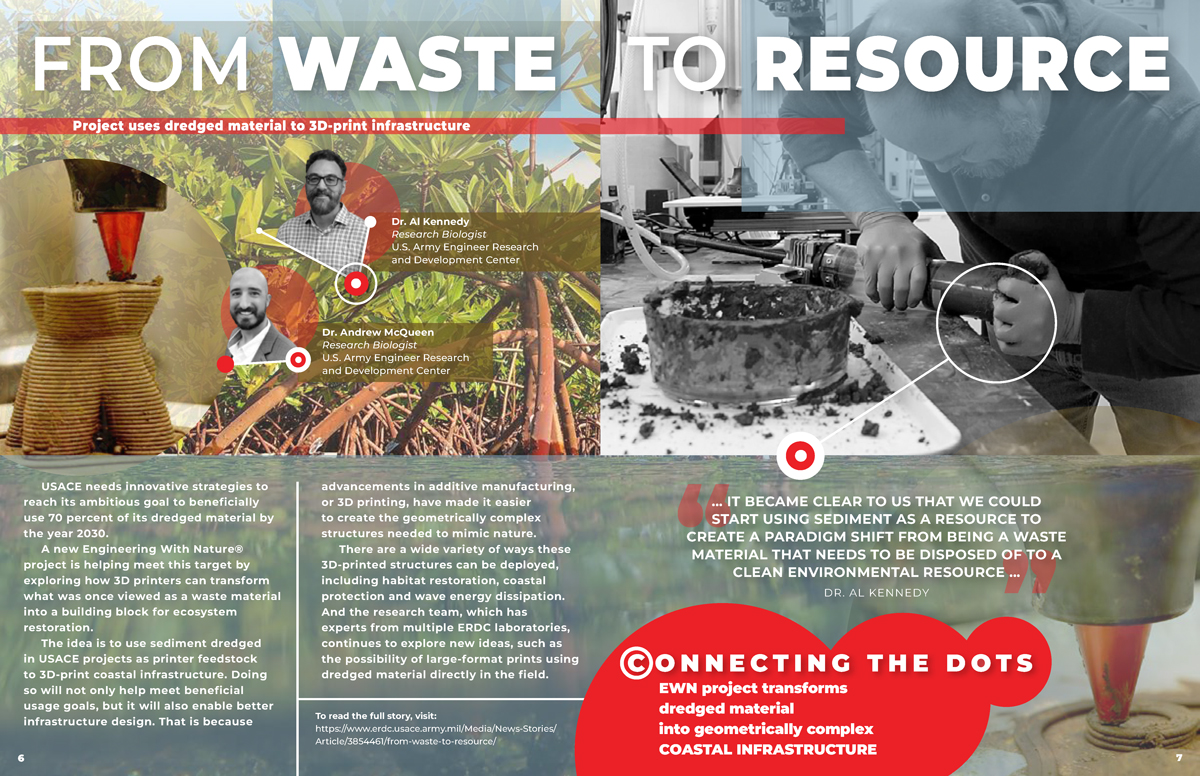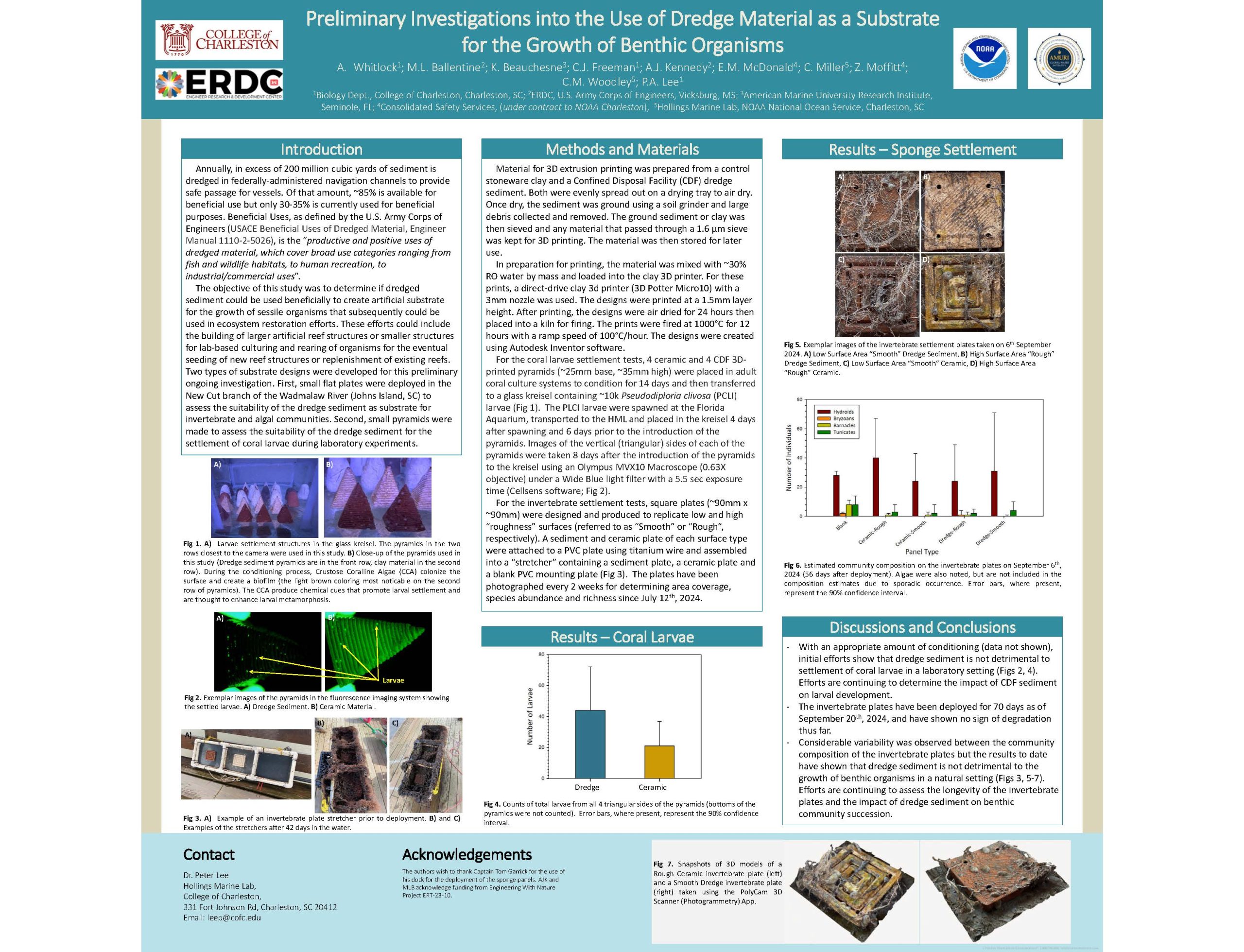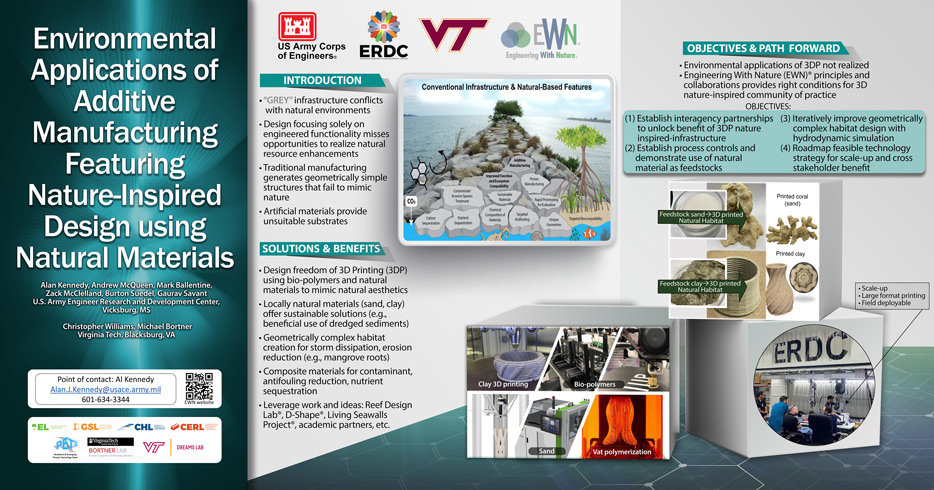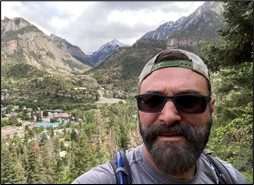Infrastructure design focusing solely on engineering functionality misses opportunities to realize natural resource enhancements to achieve additional economic, ecological, and social benefits. Traditional manufacturing generates geometrically simple structures that do not mimic natural geometries. The design freedom unlocked by 3D Printing (3DP) diverse synthetic and natural materials is ideal for mimicking natural aesthetics and rapidly testing design prototypes through iterative hydrodynamic modeling. 3DP habitat and erosion control structures using natural materials promote EWN and USACE goals for broadening social, ecological, and economic benefits. Applications of 3DP include nutrient sequestration, habitat restoration, erosion control and energy dissipation (Figure 1). The unique principles and synergistic collaborations available in the EWN community provide the right conditions for a 3DP Nature Inspired (3DP-NII) community of practice (CoP) to emerge. The objectives are to establish interagency partnerships to brainstorm and unlock the full benefit of 3DP-NII for a feasible technology roadmap for scale up and cross agency benefit, establish process controls and demonstrate use of natural material feedstocks (e.g., beneficial use of dredged material) and to iteratively improve geometrically complex habitat design through hydrodynamic simulation.







